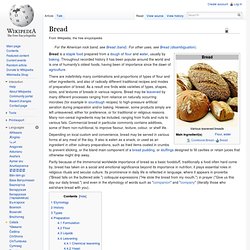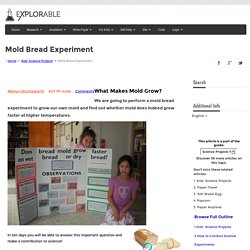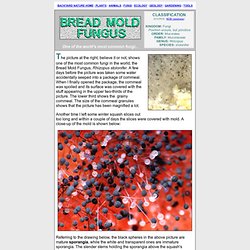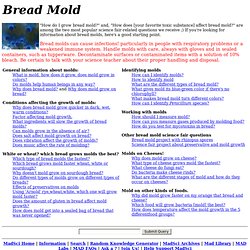Zoom
Trash

Bread. Bread is a staple food prepared from a dough of flour and water, usually by baking.

Throughout recorded history it has been popular around the world and is one of humanity's oldest foods, having been of importance since the dawn of agriculture. There are indefinitely many combinations and proportions of types of flour and other ingredients, and also of radically different traditional recipes and modes of preparation of bread. As a result one finds wide varieties of types, shapes, sizes, and textures of breads in various regions.
Bread may be leavened by many different processes ranging from reliance on naturally occurring microbes (for example in sourdough recipes) to high-pressure artificial aeration during preparation and/or baking. However, some products simply are left unleavened, either for preference, or for traditional or religious reasons. Depending on local custom and convenience, bread may be served in various forms at any meal of the day. Etymology History Types Preparation. Effect of weak acid preservatives on gr... [Int J Food Microbiol. 2004. Effect of NaCl reduction and replacement on t... [Food Microbiol. 2010. Mould spoilage of bread: the problem and some solutions 10.1016/0964-8305(93)90038-4 : International Biodeterioration & Biodegradation. Yeast spoilage of bakery products and ingredients - Legan - 2008 - Journal of Applied Microbiology. Genetic diversity and involvement in bread spoilage of Bacillus strains isolated from flour and ropy bread - Sorokulova - 2003 - Letters in Applied Microbiology.
Mold Bread Experiment. What Makes Mold Grow?

We are going to perform a mold bread experiment to grow our own mold and find out whether mold does indeed grow faster at higher temperatures. This article is a part of the guide: Discover 36 more articles on this topic Browse Full Outline In ten days you will be able to answer this important question and make a contribution to science! But what is mold? What is Mold? Mold is something that we often take for granted, as something that makes us have to throw the bread away or the cheese smell bad. Mold is, in fact, a fascinating organism which has had many different uses over the years and our lives would not be the same without it. Most of us know that food seems to become moldy more quickly in the summer than in the winter when it is colder. Important Note Please note that some people are allergic to mold; ask your doctor or parents.
Performing the Mold Bread Experiment Hypothesis In the Mold Bread Experiment we are trying to prove that; 15 slices of bread. Method Results. Bread Spoilage and Staling. Bread mold fungus, Rhizopus stolonifer. The picture at the right, believe it or not, shows one of the most common fungi in the world, the Bread Mold Fungus, Rhizopus stolonifer.

A few days before the picture was taken some water accidentally seeped into a package of cornmeal. When I finally opened the package, the cornmeal was spoiled and its surface was covered with the stuff appearing in the upper two-thirds of the picture. The lower third shows the grainy cornmeal. The size of the cornmeal granules shows that the picture has been magnified a lot. Another time I left some winter squash slices out too long and within a couple of days the slices were covered with mold.
Referring to the drawing below, the black spheres in the above picture are mature sporangia, while the white and transparent ones are immature sporangia. The drawing at the left shows a close-up of the asexually reproducing Bread Mold Fungus shown above. All of a fungus's hyphae considered together are known as its mycelium. FAQ: Bread molds and other moldy foodstuffs. "How do I grow bread mold?

" and, "How does [your favorite toxic substance] affect bread mold? " are among the two most popular science fair-related questions we receive ;) If you're looking for information about bread molds, here's a good starting point. Bread molds can cause infections! Particularly in people with respiratory problems or a weakened immune system. Handle molds with care, always with gloves and in sealed containers, such as tupperware. MadSci Home | Information | Search | Random Knowledge Generator | MadSci Archives | Mad Library | MAD Labs | MAD FAQs | Ask a ?